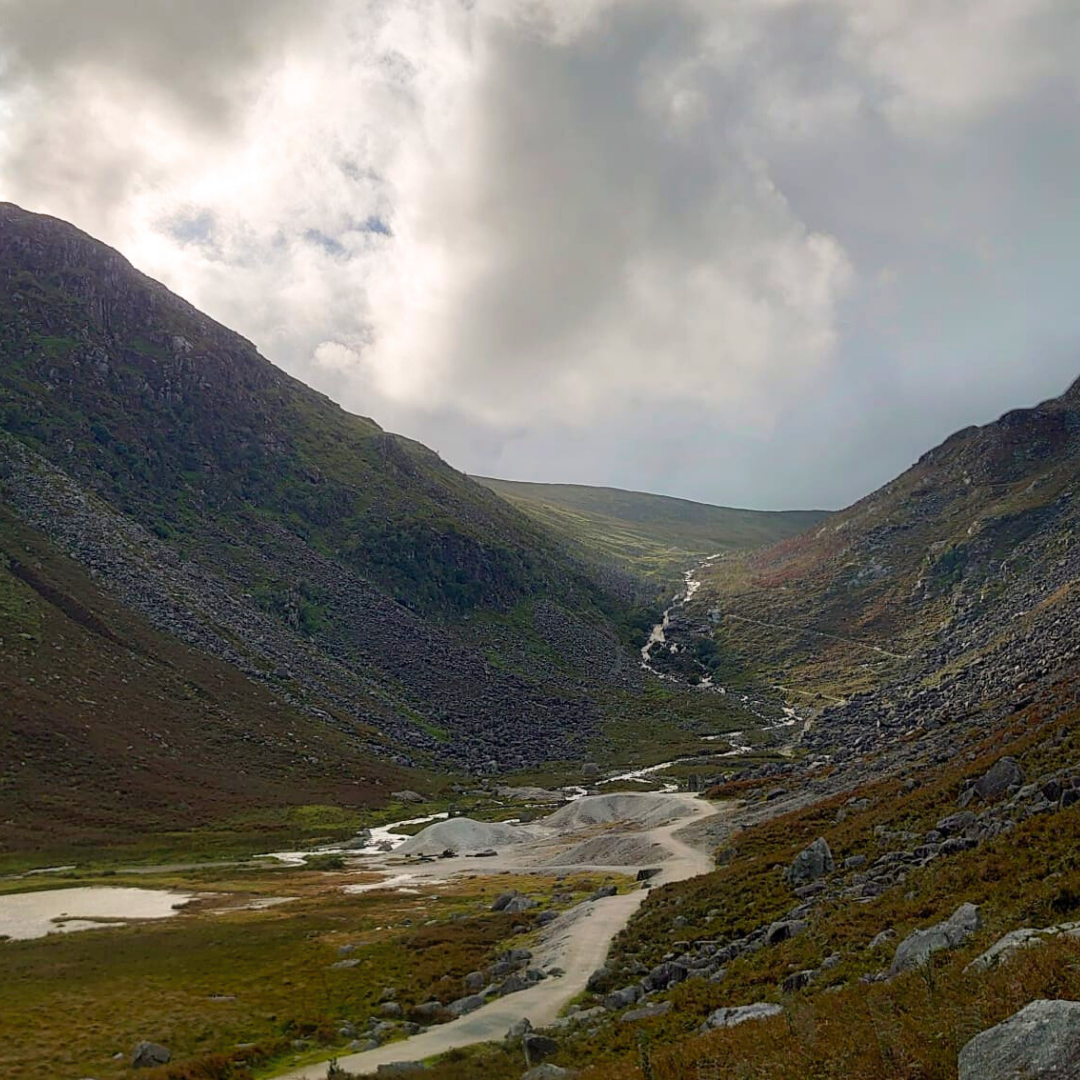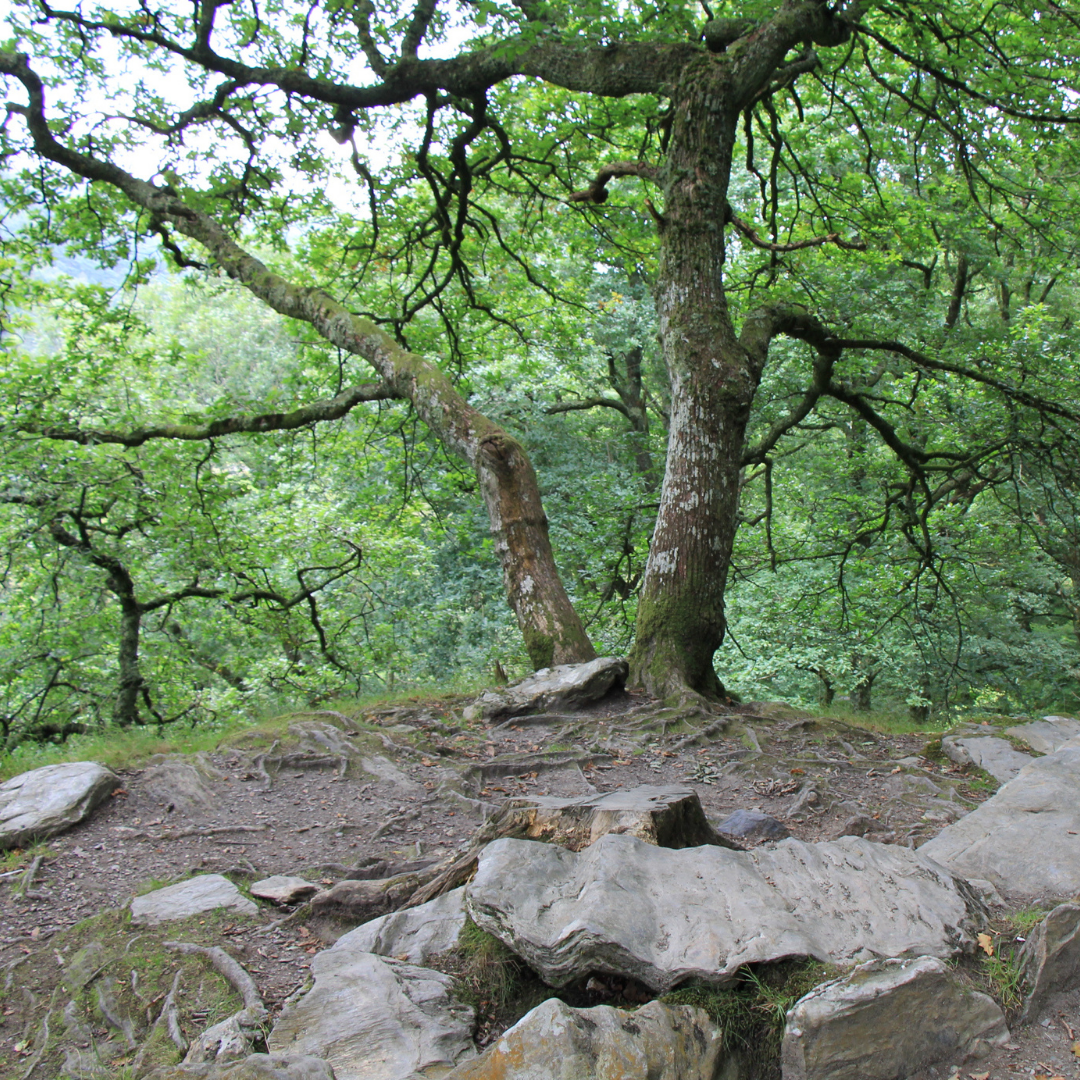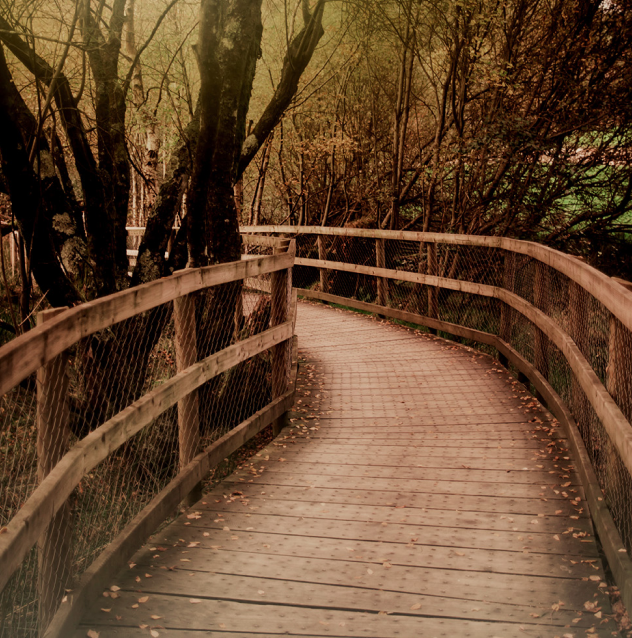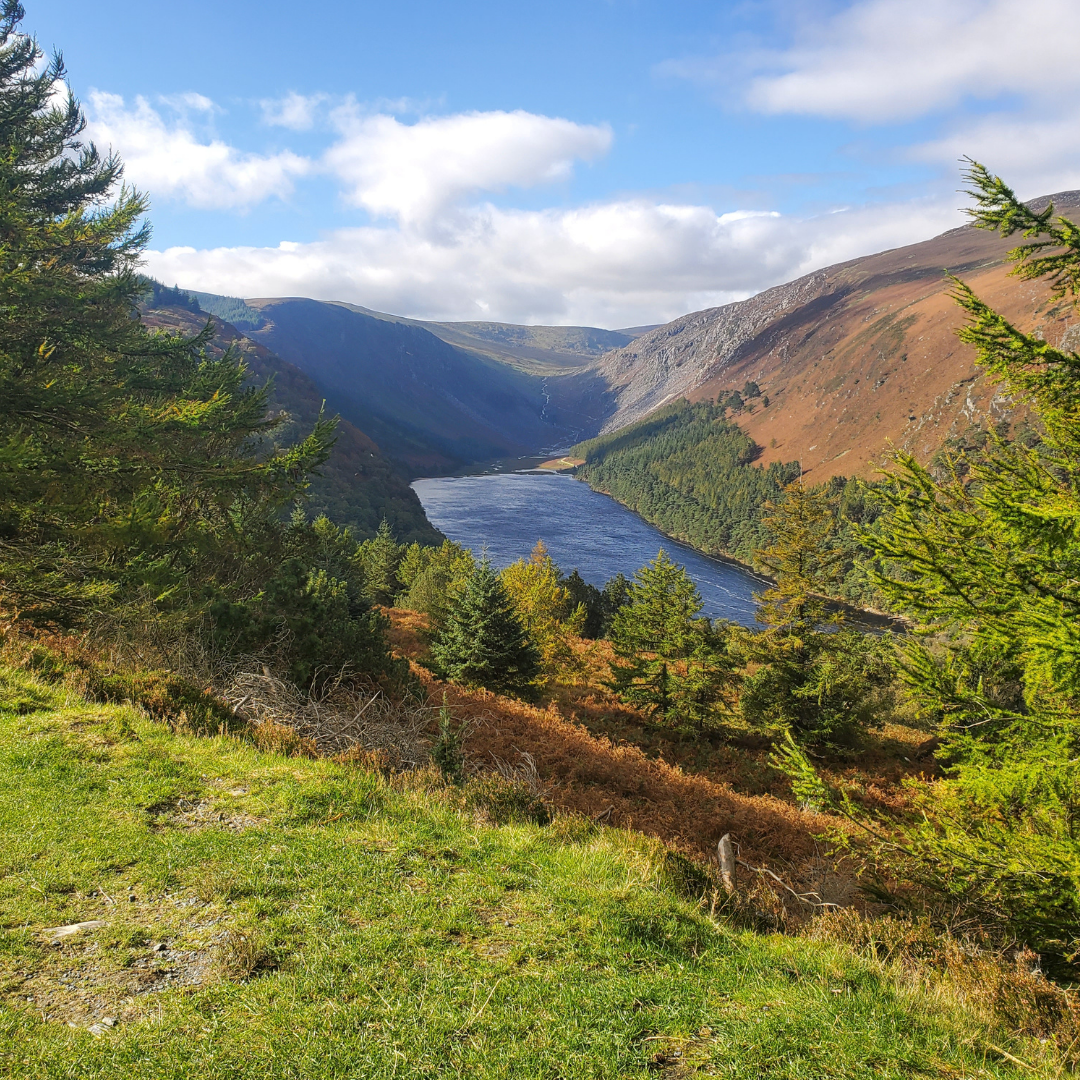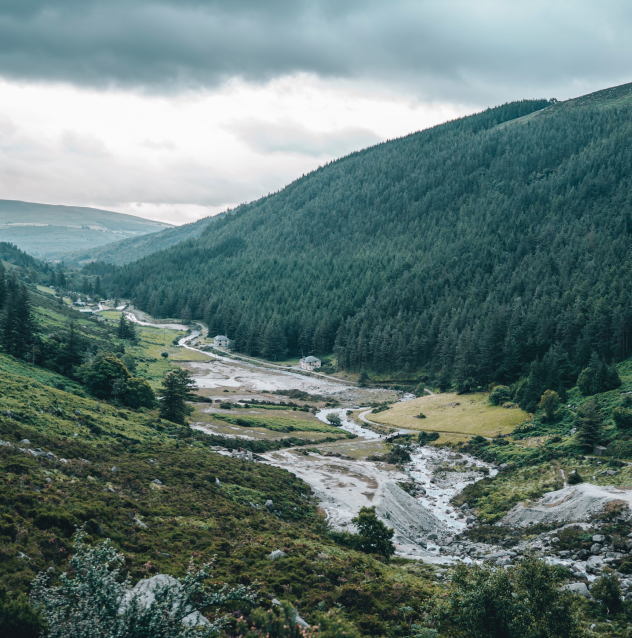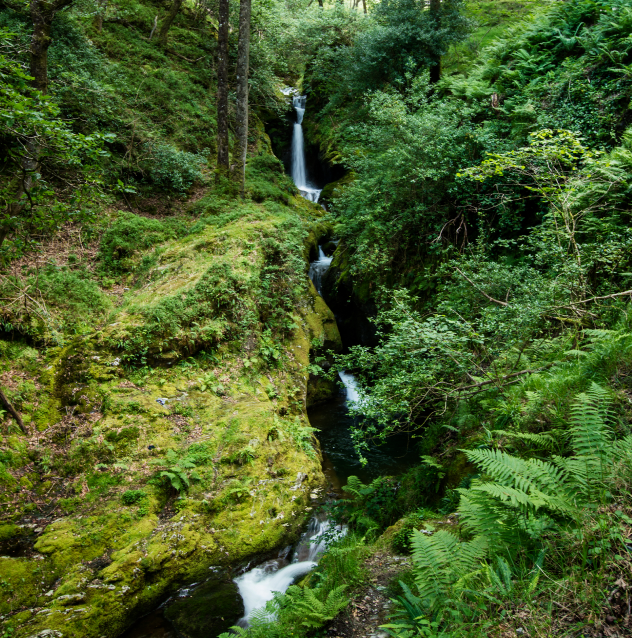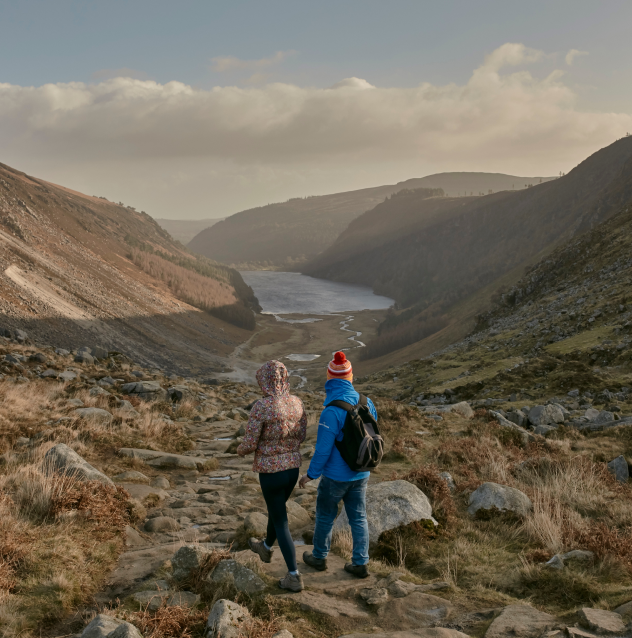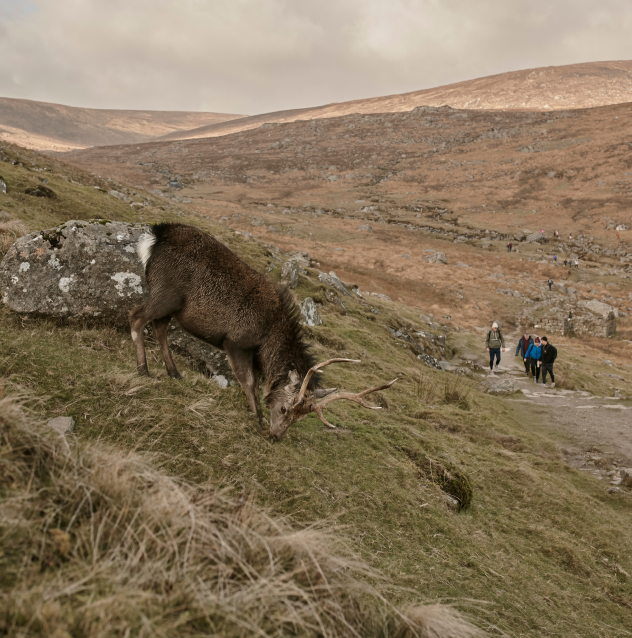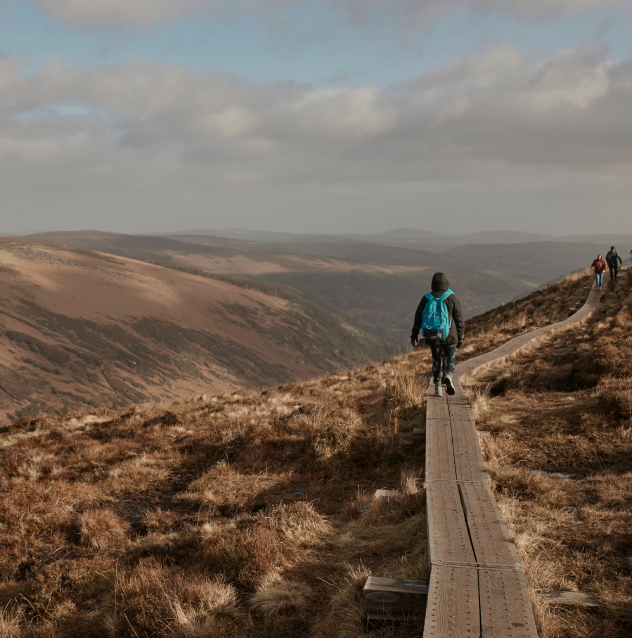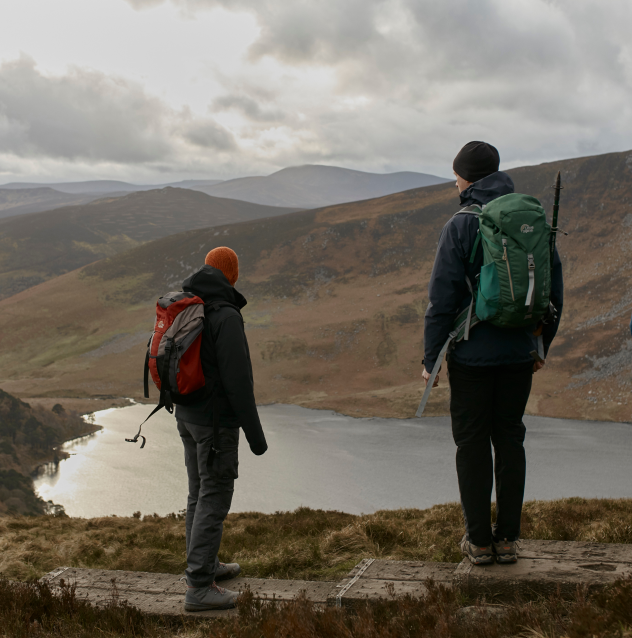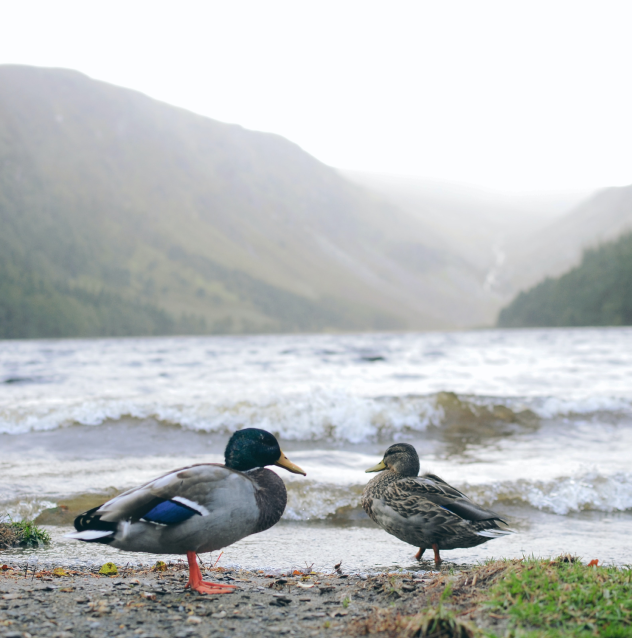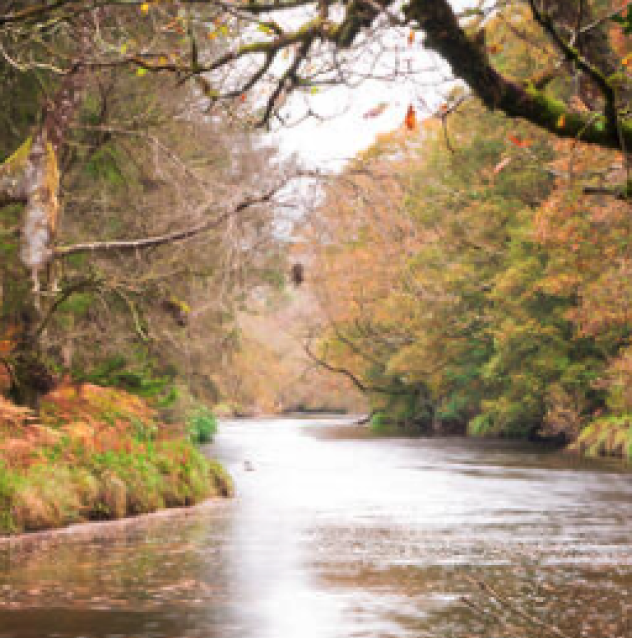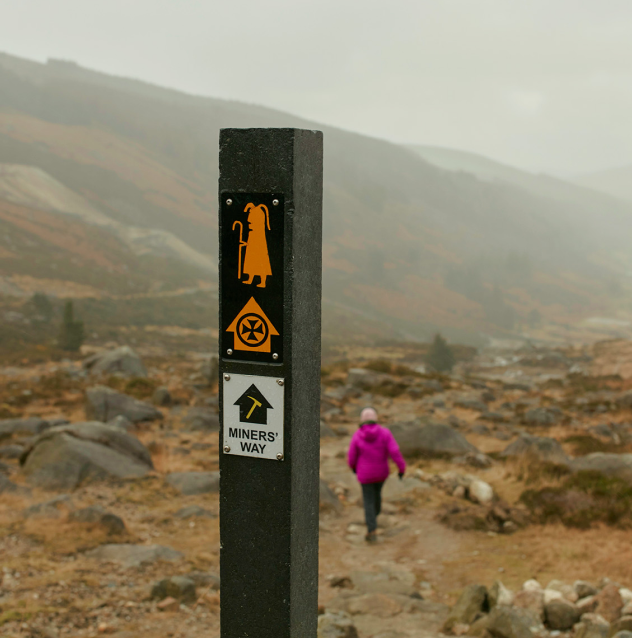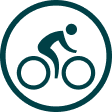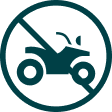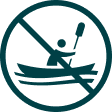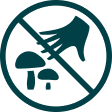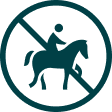Walking and Hiking
There are nine waymarked trails in Glendalough, from short walks to long hikes. For a longer waymarked walk, three long-distance trails pass through the National Park – the Wicklow Way, St. Kevin’s Way and the Miner’s Way. A fourth trail, the Avonmore Way, finishes close to the park.
Large maps of the walks are displayed outside the National Park Information Office and at the OPW Visitor Centre beside the Monastic City. All the walks start and finish at the National Park Information Office near the Upper Lake. Each trail is signposted with colour-coded arrows. Staff at the Information Office can help you choose a suitable route.
This map is also available free of charge at the National Park Information Office and at the OPW Visitor Centre.
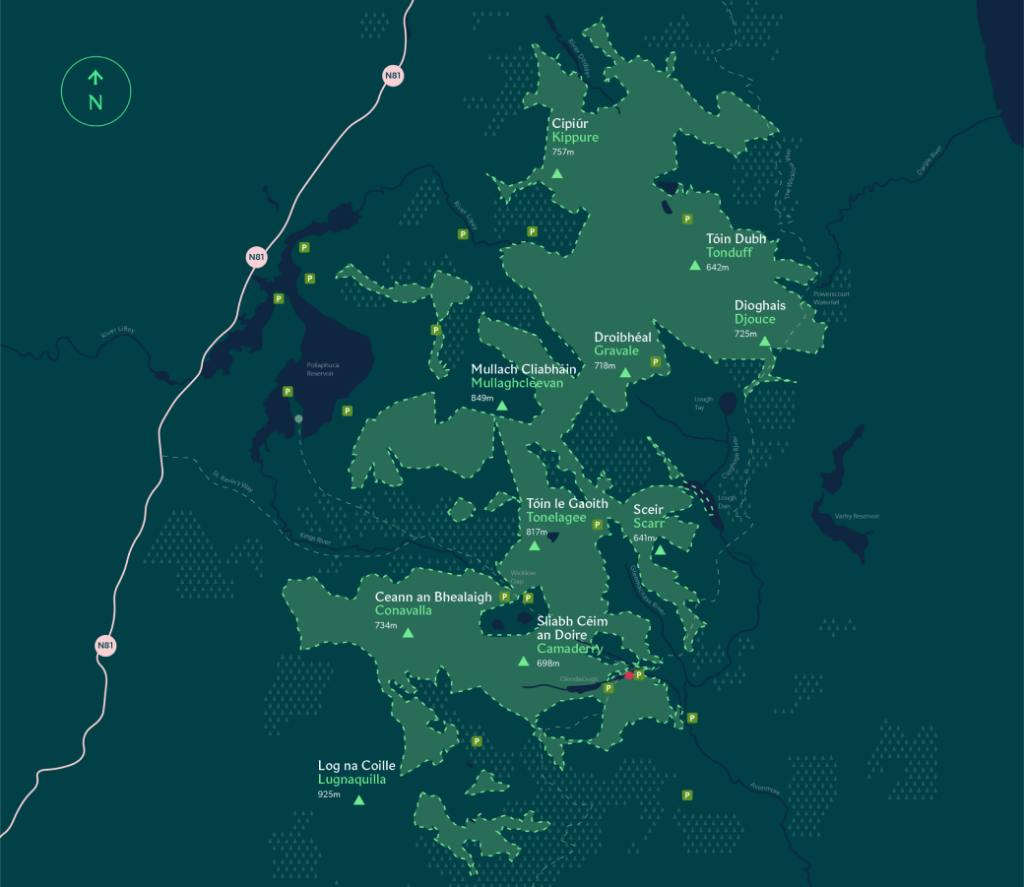
Wicklow Mountains Walking Trails
| Walking Trails | |
|---|---|
Special Events and Large Groups
Note: Special events, and any group of more than 50 people, will require a permit.
Ticks & Biting Insects
Ireland is generally a very safe place as regards wildlife. There are no longer any large predators like bears, wolves, or large cats, but Ireland is home to smaller creatures that may prove troublesome. In Wicklow Mountains National Park visitors may encounter swarms of midges (small biting flies) on warm and humid days, and walkers venturing off tracks may be bitten by ticks. All walkers should be aware that ticks can, in rare cases, carry Lyme disease. Learn more about ticks and biting insects in our guide below.
Information Office
Open:
March – October: 10am – 5.30pm
November – February: 10am – 4.30pm
Occasionally the information office may close unexpectedly due to first aid or rescue incidents. We apologise for any inconvenience caused.
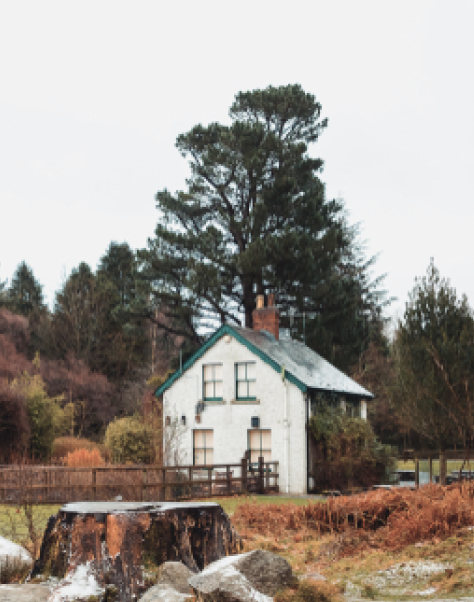
The Information Office for the National Park is located 200 metres from the Upper Lake Car Park in Glendalough.
Please note that the National Park is open day and night, all year round. However, the Information Office is only open at certain times.
Facilities
- March – October: 10am – 5.30pm
- November – February: 10am – 4.30pm
Facilities include:
- Lost property
- Lost visitor
- Free walking trail maps
- First Aid
- Emergency facilities
Wildlife & Sensory Garden
- SPRING – SUMMER
- 10:00 am – 5:30pm from information office
A wildlife and sensory garden is located behind the Information Office. Visitors are encouraged to smell and touch the plants, listen to nature’s sounds and admire the planting.
A small pond attracts frogs and dragonflies, while butterflies, bees and hoverflies feed on the flowers in the borders. The garden is closed in the winter.
History
The Great Military Road
The Great Military Road was constructed between 1801 and 1809 and runs from Rathfarnham to Aughavannagh, with a side arm from Enniskerry to Glencree.
The route covers 58km (Rathfarnham – Featherbed – Glencree – past Kippure – Sally Gap – Glenmacnass Waterfall – Laragh – Shay Elliot memorial – Drumgoff (Glenmalure) – Aughavannagh.
For a good part of its length, this scenic route travels through Wicklow Mountains National Park, and is a good way to see the mountain blanket bog habitat. Visitors can opt to drive the whole linear route, or they can do a circular loop along parts of the Military Road.
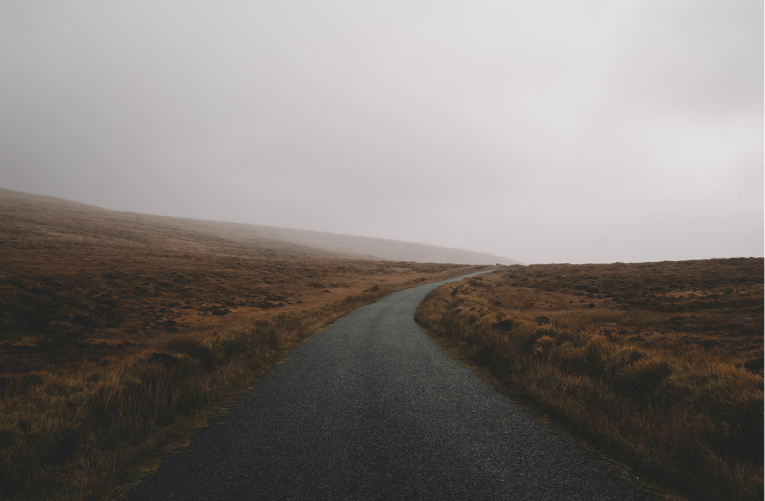
Glendalough’s Monastic Sites
In the latter part of the sixth century, St. Kevin crossed the mountains from Hollywood to Glendalough. Within 100 years, the area had become one of the most important monastic sites in Ireland, and it continued to flourish after St. Kevin’s death in 617 A.D.
By the end of the eighth century, the monastery employed up to 1,000 laypeople. Monasteries were wealthy and as such, were often plundered. Glendalough’s remote location made it an easy target and between 775 and 1095 it was plundered many times by local tribes and Norse invaders. However, the eventual decline of Glendalough’s monastery was not due to invaders but rather to a shift in political power. When Glendalough was annexed to the diocese of Dublin in 1152, its importance declined. Despite this, the place has retained a spiritual significance.
The ruins of the ancient monastic site are scattered throughout the valley, with the main sites located in the area known as the Monastic City, beside the OPW Visitor Centre.
The Monastic City is the name given to the main monastic site at the eastern end of the valley, close to the OPW Visitor Centre and the Glendalough Hotel.
The ruins are open all year round. Admission is free but charges may apply for parking.
Guided tours of the Monastic City are available from the OPW Visitor Centre.
Exhibition and audio visual show located in the OPW Visitor Centre (admission fee applies).
Sites are not accessible by wheelchair.
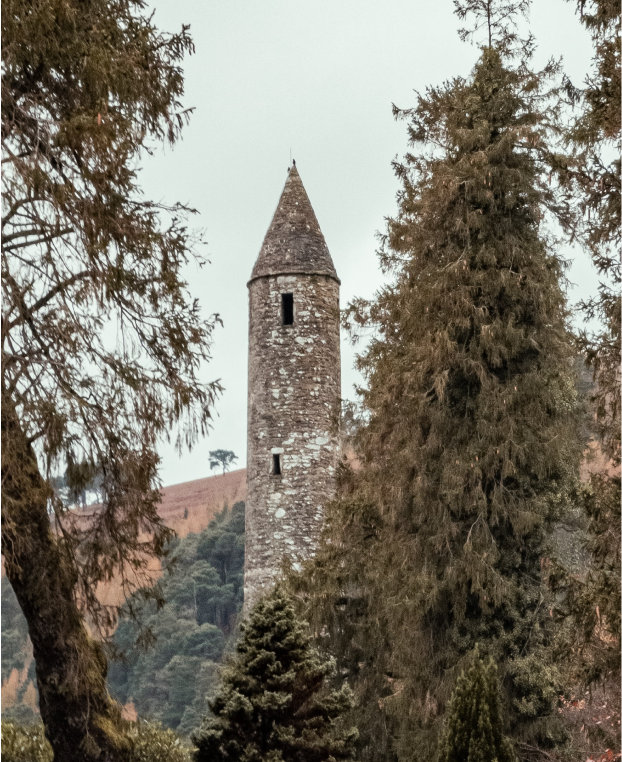
Glendalough’s Monastic Sites
Standing at the entrance to the Monastic City, this unique building is perhaps one of the most important monuments. The building was originally two-storeyed, probably with a timber roof. Inside, on the west wall, is a cross-inscribed stone. Visitors entering the Monastic City from the road still pass through this ancient entrance, walking on some of the original stone paving.
Perhaps the most noticeable monument, the Round Tower is about 30m high. The entrance is about 3.5m from the base. Originally there were six wooden floors with ladders. The roof was rebuilt in 1876 using the original stone.
This is the largest of the churches and was constructed in several phases. Of note are an aumbry or wall cupboard under the southern window, and a piscina – a basin used for washing sacred vessels. Outside the cathedral is St. Kevin’s Cross – a large early granite cross with an unpierced ring.
This is a small Romanesque building which was almost totally reconstructed using the original stones in 1779. The east end has a decorative arch. The original purpose of the building is unknown, but it may have been used to house the relics of St. Kevin.
This church is most noticeable for its steep roof formed of overlapping stone, supported internally by a semi-circular vault. The belfry has a stone cap and four windows facing north, south, east and west, and is reminiscent of a round tower.
Only low walls of this church remain. It was uncovered in 1875, and probably commemorates the founder of Clonmacnoise, a monastic settlement that had associations with Glendalough during the 10th century.
Mining in Glendalough & Glendasan
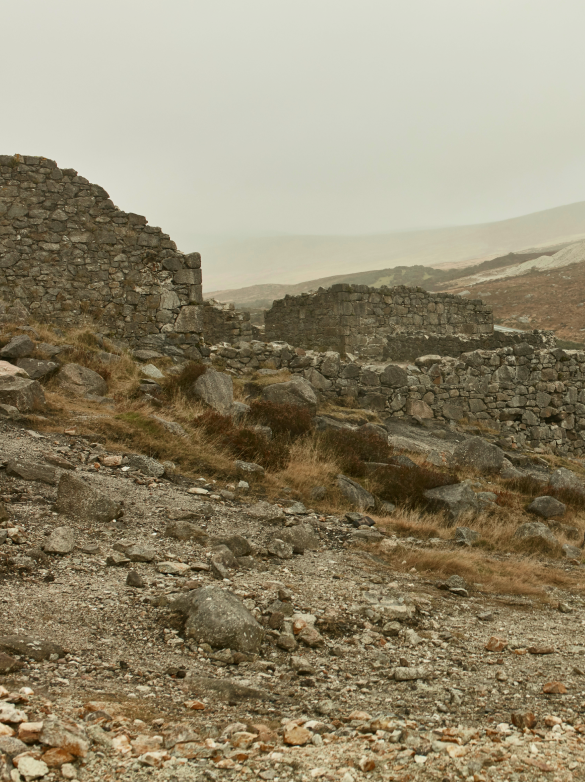
Visitors are welcome to stroll around and explore the spoil heaps and ruined mine buildings within the National Park at Glendasan (on the Wickow Gap road) and at the Miners’ Village in Glendalough.
The Miners’ Village in Glendalough is only accessible on foot. Follow the Miners’ Road for 1.5km from the Upper Lake Car Park. The mining ruins in Glendasan are located beside the R756 road (between Laragh and the Wicklow Gap). There is a small parking area.
NOTE: the underground mines are NOT accessible.
The park’s lakes and rivers are some of the most beautiful and species-rich parts of the Wicklow Mountains National Park. We manage the waterways primarily for conservation and most are too deep, cold, and unpredictable for leisure activities. After rain, for example, mountain rivers can rise dramatically and suddenly.
Is swimming or paddling allowed in Wicklow Mountains National Park?
Only the sandy area at the eastern end of the Upper Lake in Glendalough is used for summer paddling and swimming. Please note there is no lifeguard and the shallow areas are narrow and drop off suddenly, and the lake is deep. Never leave children to swim or paddle without close supervision. Airbeds and other inflatables are not permitted.
What water safety measures are in place?
There is no lifeguard on duty, but you will find life rings at regular intervals along the shore. If you enter the lake, it’s entirely at your own risk.
Is scuba diving permitted in the park?
Yes, scuba diving is allowed with a permit and occurs mostly in the Upper Lake, Glendalough. Scuba diving clubs who are granted a permit must follow the safety procedures specified in the permit. Apply for a scuba permit here.
Are canoeing and boating allowed in the park?
The lakes at Glendalough are a nature reserve and no boating, canoeing or kayaking is permitted. For canoeing in Ireland see www.irishcanoeunion.com, who may have information about canoeing and kayaking on the Avonbeg and Avonmore rivers.
Can I use a power boat, water skis or jet ski in the park?
No, power-boating, water-skiing and jet-skiing aren’t permitted in the lakes of Wicklow Mountains National Park, including Glendalough Upper or Lower Lake, Upper Lough Bray or Lough Ouler. The only boats in use are for management and rescue purposes.
Is fishing allowed in the park?
Yes, but fishing isn’t common because of the small size of the fish due to low nutrients in the water, and the limited season. The average size of brown trout (the most common species caught) is just 15-18cm (6-7 inches); fish under 20.5cm (8 inches) must be returned unharmed. Fishing is permitted from 15 March to 30 September using artificial lures only (no live bait). The principal angling waters are the Upper River Liffey, the Avonmore, Lough Dan, Glendalough Upper and Lower Lakes, Kelly’s Lough and Lough Ouler.
Cyclists are welcome on the park’s hard, surfaced roads and selected walking trails only. We can’t allow any mountain biking, off-roading or other wheeled activities, which damage the soft ground. Upland blanket bog and heath habitats are particularly sensitive.
Where can I cycle in Wicklow Mountains National Park?
Bicycles are welcome on any hard road within the National Park, such as the public roads and the forest roads around Glendalough. You’ll need a permit for special events and large groups, such as competitive cycling or touring; apply here for a cycling event permit. See below for the walking trails that permit cycling. No mountain biking is allowed in the park.
Is cycling allowed on the walking trails in Glendalough?
Yes, on selected trails only, but cyclists must always give way to pedestrians. The following trails are suitable for cyclists:
- The Green Route – around the Lower Lake.
- The Purple Route – down the Miners’ Road, as far as the Miners’ Village, and back the same way.
- The Orange Route – around the Derrybawn Woodland Trail.
Is mountain biking allowed in the park?
No, mountain biking is not permitted within the National Park because of the damage it does to the fragile habitats. However, Coillte have created two mountain bike trails in the area: the Ballinastoe Mountain Bike Trail (14km) and the Ticknock Mountain Bike Trail (8km). See details here of Coillte’s purpose-built mountain biking trails.
I’ve seen off-road motoring and scrambling in the park. Can I do this?
You might have seen motorbike trials, which have received an official permit. However, no other off-road motoring or scrambling is permitted, to protect the park’s habitats. Motorbike trial clubs can apply for a permit here and must satisfy all conditions of the permit.
Do you have a question not answered here? Please Contact Us.
The crags along the Miners’ Road at Glendalough and in Glenmalure are favourite spots for rock climbing, while bouldering is popular in the granite scree at the Miners’ Village, Glendalough. Please note areas that are off limits.
It’s very important not to dislodge cliff plants or to disturb birds during breeding seasons (approx. April to June for peregrine falcon). For further information on sensitive times, contact the Information Office.
Are any areas of Wicklow Mountains National Park off limits for climbing?
The cliffs of the Spinc on the south side of the Glendalough valley are not suitable for climbing.
Where can I learn more about climbing in the park?
The Mountaineering Council of Ireland has produced the climbing guide ‘Wicklow.’ This is available for consultation in the Information Office. You can also check out Mountaineering Ireland.
Do I need a permit to climb or boulder in the park?
Only special climbing events and large climbing groups require a permit: apply for one here.
Do you have a question not answered here? Please contact us
Wicklow Mountains National Park offers excellent opportunities for paragliding and hang gliding. For either activity, you’ll need to apply for a permit and obey restrictions that protect wildlife.
Help us protect birds from disturbance
To ensure that paragliding and hang gliding don’t disturb wildlife, there are restrictions on certain sites during the nesting season (1 March – 31 August). Especially vulnerable is the peregrine falcon, one of the species for which the Wicklow Mountains Special Protection Area of Birds (SPA) is designated.
The National Park Rangers communicate with the Irish Hang Gliding and Paragliding Association (IHPA) who update their members on restricted areas and lifting of area bans. Obeying restrictions helps us protect sensitive species and their habitats. You may be prosecuted if you violate restrictions.
Do you have a query not answered here? Please contact us.
Picnic areas are located at the Upper Lake in Glendalough. For safety and environmental reasons, only gas barbeques are allowed. Fires and solid fuel barbeques are not permitted. Please take all litter home with you, and follow the principles of Leave No Trace.
Special events, or groups of 50 people or more, will require a permit.
Permit Application Form
Wild Camping
Note: Failure to comply with this code will result in withdrawal of permission to camp. In such cases National Park rangers will demand that the visitors break camp.
Wicklow Mountains National Park has no serviced camping or caravan sites, but if you’re planning a multi day hiking trip and seeking a wilderness experience, you’re welcome to pitch camp as long as you follow the Wild Camping Code – that means no fires, careful siting of any catholes, and following the guidelines for camping and washing up. Wilderness camping is the only sort permitted in the park although no camping of any kind is permitted in Glendalough. Read the full Wild Camping Code below.
Photography, Drones & Filming
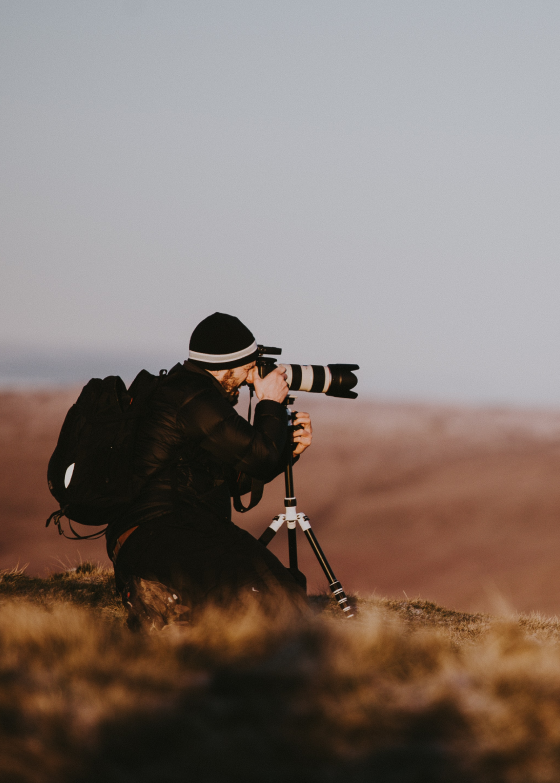
With its beautiful scenery and wildlife, Wicklow Mountains National Park is a mecca for photographers. When taking photographs in the park, please be aware of the wildlife and their habitats. Nests may only be photographed or filmed under permit and licence, and all commercial photography will require a permit.
The flying of drones is not permitted within the National Parks except under permit. Low-flying aircraft and other objects (drones, kites, hang gliders, etc.) are regulated within Wicklow Mountains National Park.
Helicopters are often used within the park for tasks including search and rescue operations, and drones can interfere with this important work. All drone owners should read the Irish Aviation Authority’s Drones Q & A.
Wicklow Mountains National Park and its surrounding areas have featured in various films including Braveheart, Excalibur, Michael Collins and many others. Commercial filming requires a permit.
Details about Wicklow film trails can be found at Visit Wicklow.
If you have any queries, please contact us.
Dogs
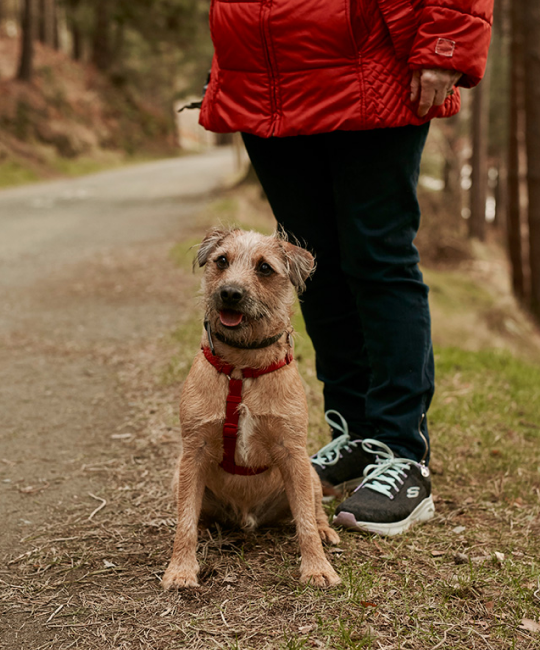
Dogs are welcome in the National Park, but dog owners must be aware that this area is primarily for the conservation of nature and dogs MUST be kept on a lead at all times.
Dog owners are asked to comply with our Code of Conduct.
Specialised dog activities, such as gun dog trials, occasionally occur in the National Park. All such trials are subject to a permit.
Search and Rescue Dogs (SARDA) may be seen training or working in the National Park on occasion.
Many activities in the National Park require a permit, including:
- All large-scale events (e.g. sponsored walks and sporting events)
- Special events including large picnics / parties
- Commercial filming and commerical photography
- Drones
- Hang gliding and paragliding
- Scuba diving
- Gun dog trials
- Horse riding
If an activity is not listed here, it does not mean that the activity is allowed. If in doubt, please contact us and ask.
Applications for a permit should be made either:
- In writing to:
Wicklow Mountains National Park, Kilafin, Laragh, via Bray, Co. Wicklow, A98 K286. - In person at the National Park headquarters.
- By phone on 0404 45800
- By email to wmnp@npws.gov.ie
Please provide as much detail as possible – dates, locations, nature of activity, necessity to carry out activity.
Permit requests should be at least seven days prior to the proposed event.
Persons acting under permit must produce that permit on request for inspection by park staff.
If you have any queries please contact us.


